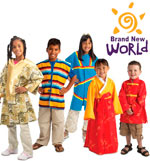Babies' People Sense
Amanda Gorman, 2020 National Youth Poet Laureate
In her just released book, Mind in the Making: The Seven Essential Life Skills Every Child Needs, Ellen Galinsky talked about "amazing babies." She gave an example of how babies have people sense: "they focus on people's intentions rather than seeing what people do as random movements in space." By six months, they can tell the difference between people who are helpful and those who are not.
To illustrate this, Galinsky described the results of a study done at Yale University in which babies are shown a puppet show where a round circle with big eyes tries to reach the top of a hill and is helped up to the top by a square but pushed down by a triangle. After a baby viewed the show, a tray with the square and the triangle was placed in front of him or her to see which one she or he reaches for. Would the six-month-old reach for the helpful shape or the unhelpful shape, or would there be no pattern. Here was what the researchers reported:
"We found impressively that almost one hundred percent of the babies in a number of different studies preferred the more helpful character."
 Ellen Galinsky has captured relevant early childhood research and spelled out for parents and teachers the practical applications for raising well-rounded children who will reach their full potential in Mind in the Making: The Seven Essential Life Skills Every Child Needs. She groups this research into seven "essential life skills":
Ellen Galinsky has captured relevant early childhood research and spelled out for parents and teachers the practical applications for raising well-rounded children who will reach their full potential in Mind in the Making: The Seven Essential Life Skills Every Child Needs. She groups this research into seven "essential life skills":- Focus and self control
- Perspective taking
- Communicating
- Making connections
- Critical thinking
- Taking on challenges
- Self-directed, engaged learning
Only $6.00 per order and 50% profit on every sale. Your bank account will start Greening up!
For more information about Exchange's magazine, books, and other products pertaining to ECE, go to www.ccie.com.
|
© 2005 Child Care Information Exchange - All Rights Reserved | Contact Us | Return to Site


